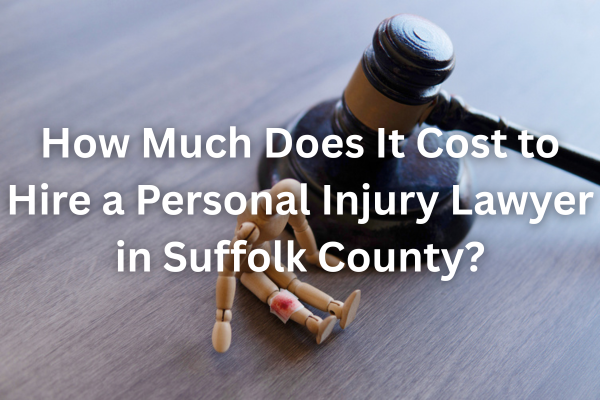

If you’re recovering from an accident in Suffolk County, the last thing you want is a surprise bill. The good news is that most personal injury cases here are handled on a contingency fee, meaning you don’t pay upfront legal fees. Here is how costs and fees usually work, what percentages you can expect, how case expenses are handled, and how to make sure you understand your agreement before you sign.
For typical Suffolk County car, truck, pedestrian, bicycle, slip-and-fall, construction, and other negligence cases, there are no upfront attorney’s fees. Your lawyer is paid a percentage of the recovery at the end of the case. If there is no recovery, you generally do not owe an attorney’s fee.
A contingency fee ties the lawyer’s compensation to the result. Instead of billing by the hour, the attorney receives a set percentage of the settlement or verdict. This aligns incentives: your lawyer only gets paid if you do.
In most personal injury matters in New York that are not medical malpractice, the contingency fee is commonly one-third of the net recovery. Medical malpractice cases have special statutory rules and often use a sliding scale set by law; your attorney will explain if those rules apply to your situation.
While every firm has its own structure, these are common in Suffolk County personal injury matters:
Always ask to see the written retainer and make sure the percentage, timing, and treatment of costs are spelled out in plain language.
In addition to the contingency fee, there are out-of-pocket costs needed to develop and prosecute your case. Typical examples include:
Two common ways firms handle these costs:
Be sure your retainer agreement states whether costs are deducted before or after calculating the lawyer’s percentage. Many firms deduct costs first, then apply the contingency to the remainder, but you should confirm how your agreement is written.
Suppose your case resolves for $300,000 and documented case expenses total $9,000.
If there are healthcare liens or reimbursement claims (for example, from private health insurance, Medicare, Medicaid, or workers’ compensation), your attorney will typically negotiate those down wherever possible, and any such payments would come from the client’s share. Ask for a clear, written closing statement so you can see every line item.
With a standard contingency arrangement, you do not owe an attorney’s fee if there is no recovery. The question then is who is responsible for the out-of-pocket costs. Many Suffolk County firms absorb those costs if the case is unsuccessful; others may ask clients to reimburse certain expenses. This should be clear in your retainer before you sign.
Occasionally, yes—but they’re rare. Hourly or flat fees might appear in highly unusual circumstances, advisory roles, or where the matter falls outside typical negligence claims. If a firm suggests an hourly or flat-fee approach, ask what makes your situation different and how that structure benefits you.
Bringing these questions ensures you fully understand your agreement and helps you compare firms on more than just the percentage.
Personal injury practice is local in important ways. Cases in Suffolk County often involve specific police departments and report systems, regional trauma centers and orthopedists, collision shops and property carriers that regularly operate on Long Island, and court rules and customs at the Cohalan Court Complex and county venues. A firm that regularly works with these stakeholders can often move records faster, anticipate insurer tactics common to the region, and prepare your case with the right experts familiar with local conditions.
For most Suffolk County personal injury clients, hiring an attorney does not require any upfront payment. A standard contingency fee means your lawyer is compensated from the recovery, and only if there is a recovery. Make sure your retainer clearly explains how costs are handled, when they are deducted, and how liens will be resolved, so there are no surprises when your case concludes.
Palermo Law focuses on personal injury cases and has represented Long Island clients for over three decades. The firm structures cases with clear contingency agreements, transparent cost tracking, and proactive lien negotiation so clients understand exactly how the numbers work. That clarity helps you focus on healing while your case is being built the right way.
If you or a loved one was injured in Suffolk County, reach out to Palermo Law for a free, no-pressure consultation. We can walk you through likely costs, timelines, and next steps tailored to your situation. Contact Palermo Law today to discuss your options and learn how we can help.